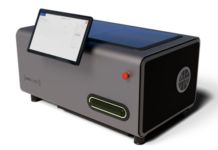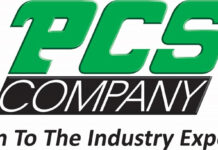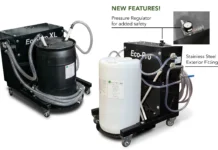Cautious Optimism for European Plastics Industry
Plastics Business
At K 2013, a total of 3,220 exhibitors from 59 countries showcased their capabilities, and 218,000 trade visitors from over 100 countries used this event as a business platform for information and investments.
K 2016
- When: Oct. 19-26
- Where: Düsseldorf, Germany
- Tickets: www.k-online.com
Brexit and the Plastics Industry
- The Americans’ Guide to Understanding Brexit
- What Now for a Post-Brexit UK Plastics Industry?
- Brexit Fallout Expected to Hit UK Plastics Machine Sales
Despite having to deal with a multitude of issues ranging from marine waste to numerous special circumstances in the material suppliers sector, the European plastics industry approaches K 2016, The Worlds No. 1 Trade Fair for Plastics and Rubber, in a good state of health and with cautious optimism. The ongoing refugee crisis might even result in something positive, as thousands of well-qualified people arrive in Europe in search of new lives and new jobs. But there are still many obstacles to overcome.
Plastics industry consultant Applied Market Information (AMI) said recently that the European plastics industry finds itself in another period of upheaval and change as it struggles to pull out of the stagnation caused first by the Great Recession in 2008-2009 and the subsequent Eurozone crisis in 2012-2013. The volume of polymers consumed in 2014 was still some 10 percent below that used in 2007.
Growth is coming back, albeit slowly. AMI anticipates that, given the cautious outlook for most European economies, polymer demand over the longer term is expected to average a rate of just over 1 percent per year until 2019.
As has been the trend for several years, recent demand has been stronger in central and eastern Europe compared with western Europe. Most of the countries in the east now have a polymer demand well ahead of where they were in 2007, AMI noted. The countries of central and eastern Europe continue to offer the best prospects for growth in the European plastics industry, although the smaller economies remain vulnerable to external shocks, it said.
Supply side is content
Overall, polymer producers in Europe appear to be upbeat. At Borealis, for example, which made record profits last year, CEO Mark Garrett says integrated polyolefin industry margins were at historic highs. Despite lower feedstock costs, polyolefin prices did not retreat to the same extent driven by a tight market as a result of solid demand combined with a supply shortfall, in particular resulting from unplanned production stops, he says. In addition, imports of polyolefins into Europe have been uncompetitive following the weakening of the euro. We expect this situation to ease in 2016, but we believe the integrated polyolefin industry margin will be solid.
At BASF, Senior Vice President for Performance Materials Europe Melanie Maas-Brunner says: Overall, we look positively at the current state of the European plastics industry. We have seen good business growth in all our segments in 2015, and we are optimistic that those who have the right technologies, people and facilities globally will stay successful. We expect more demand from industries, such as medical and transportation, as well as from consumer industries, such as footwear, sports and leisure. The main trends driving those needs are resource efficiency, light weighting, comfort and energy efficiency.
Processors are busier
Prospects for the plastics processing industry across Europe appear to be improving, with trade associations in several countries reporting growth. In Germany, for example, the sector posted a moderate growth last year, after a record 2014. Even in Italy, where consumption has been flat at best for some time, equipment association Assocomaplast reports a strong upward trend in orders.
German plastics processing sector association GKV says sales rose by 1.3 percent to just below 60 billion. Packaging and technical products fared best with building and construction less successful. Manufacturers were helped in particular by the good state of the German automobile industry and also by some European auto sectors returning to growth.
Presenting sector results in March, GKV President Dirk Westerheide made some critical remarks about material suppliers, however. Some major glitches in supply and very volatile price development of raw materials, particularly polyethylene and polypropylene, affected business development, Westerheide stated.
Too much force majeure
Plastics processors across the continent last year had difficulties obtaining raw materials. Major polyolefin plants in Europe stood still for extended periods. Across Europe, there were over 40 declarations of force majeure during a period of just four months at one stage of 2015, putting significant strains on relationships between suppliers and processors. Some processors had to shut down production lines.
Global economic and trade framework conditions made it difficult for plastics processors to obtain materials on international markets. These factors included the relative weak euro against the US dollar, as well as continued strong demand for plastics in Asia and the US.
The GKV has for some time been calling for an abolition of customs duties on imported raw materials, to provide its members with improved sourcing choices. The European Plastics Converters (EuPC) trade association has said that it will conduct a search for more material to be imported from outside the EU (where more modern production sites exist) as well as the potential setting up of group purchasing platforms (in compliance with EU competition law).
Plastics packaging industry associations in Germany, France and the UK were also strong in their criticism of suppliers, hinting that some shutdowns may have been caused less due to production problems but more due to polymer producers desire to improve their margins. However, indications are that price volatility should be lower this year.
The situation last year led to EuPC establishing the Alliance for Polymers for Europe in order, as EuPC President Michael Kundel put it, to bring all forces together to fight this unjustified situation. The aim of the Alliance for Polymers for Europe is to provide detailed information on the current polymer market and help assist raw material users through its network of national plastics associations, as well as assist companies in requesting suspension of certain EU import duties to relieve shortages on polymer markets.
The alliance is also initiating a study on the aging of polymer sites in Europe, together with industry and independent experts, so as to provide more transparency on the future development of the polymer production sites in Europe.
In February, The Polymers for Europe Alliance launched its online Europe-wide customer satisfaction survey to award the best polymer producers for Europe. We decided to start the Best Polymer Producers Awards for Europe in order to re-establish a good communication between users of polymers and their suppliers, which has obviously suffered lately. We simply want to award those producers who support their European customer base, says Ron Marsh, Chairman of the Polymers for Europe Alliance.
Therefore, we chose what we believe are the six most important criteria for users of polymers when it comes to their suppliers: polymer quality, regulatory compliance, material delivery, performance, communication and innovation.
Energy costs are also very important for the entire plastics industry, and especially in Germany: electricity costs there are among the highest in Europe, due in part to levies designed to support the development of energy from renewable resources. The GKV says continuing increases in surcharges on electricity bills place an unacceptable burden on medium- and smaller-sized companies. It has called for measures to reduce the burden, noting that under current conditions, many products may not continue to be made competitively in Germany.
Companies across German industry have been particularly vocal in their complaints about high energy prices, and the German chemical industry is also concerned about its falling competitiveness on the international stage, especially compared to North American companies, who have the advantage of shale oil and gas. This advantage is not as great as it was, with oil prices currently as low as they are, but there is a general consensus that oil prices will go back up again in the coming years.
Could European shale gas provide a solution?
The focus is now on Ineos, with its activities ranging from oil and gas exploration and feedstocks to numerous plastics and chemicals. The company recently chartered eight ships to bring ethane from the Marcellus shale field of Western Pennsylvania across the Atlantic. The first delivery arrived in Norway in late March, and shipments to the companys refinery at Grangemouth, Scotland, are scheduled to start later this year. Europes first shale-based polyethylene should come onto the market very soon after.
Ineos chairman Jim Ratcliffe says that shale gas economics revitalized US manufacturing and for the first time ever Europe can access this essential energy and raw material source, too. He says the US shale will complement the declining supplies of gas from the North Sea.
The move to import shale gas is intended to be a stop-gap measure while Ineos goes about tapping reserves under the UK, whose government is among the most pro-fracking in the region. Ineos is set to drill numerous test cores this year alone, although it does not plan any fracking in 2016.
The circular economy
On top of concerns about materials and energy supply, there is also growing awareness in Europe that more needs to be done about use, re-use and preservation of precious plastics. Late last year, the European Commission adopted what it says is an ambitious new Circular Economy Package (CEP) to boost competitiveness, create jobs and generate sustainable growth. Implications for the European plastics industry are significant.
The commission says the CEP will contribute to closing the loop of product lifecycles through greater recycling and re-use, and bring benefits for both the environment and the economy.
Key actions adopted today or to be carried out under the current commission’s mandate include a strategy on plastics in the circular economy, addressing issues of recyclability, biodegradability, the presence of hazardous substances in plastics and the Sustainable Development Goals target for significantly reducing marine litter.
The Commission has also proposed revisions to legislation on waste. Key elements include a common EU target for recycling 75 percent of packaging waste by 2030 and a ban on landfilling of separately collected waste. The efficiency of recycling is lagging [growth in consumption] less than 25 percent of plastic waste collected is recycled, and about 50 percent goes to landfill, says the commission.
The PlasticsEurope trade association for plastics manufacturers has welcomed the CEP as a step closer to resource efficiency, but it has expressed concerns. “The European plastics industry has been calling for a legally binding landfill restriction on all recyclable as well as other recoverable post-consumer waste by 2025, it says. Although a 10 percent target constitutes a step in the right direction, it remains a timid attempt to put an end to the landfilling of all waste, which can be used a resource.
PlasticsEurope considers the new 2025 recycling and preparation for re-use target of 55 percent for plastic packaging waste as an extremely ambitious objective; the average plastics packaging recycling rate in Europe was under 40 percent in 2014. It says the optimum level for plastic packaging recycling lies between 35 percent and 50 percent, depending on the countrys collection, sorting and recycling capacities.
European Bioplastics (EUBP), the trade association for suppliers of bio-based plastics, says that forward looking sectors with strong environmental credentials and growth potential, such as bioplastics, need to be promoted. Materials used for industrial and commercial purposes should safely enter re-use, mechanical or biological recycling systems by design or intention. Europe is home to many innovations in biopolymers, most famous of which is probably Novamonts Mater-Bi, now used for the vast majority of carrier bags in Italy (and for a growing number of other applications in packaging, agriculture and the food service industry).
With the right framework conditions in place, the European bioplastics industry could realize its immense employment growth potential while helping to lower the impact on the environment within the EU, says EUBP. It predicts that by 2025 production capacities of bioplastics within the EU will have grown twentyfold to 5.7 million tons, equivalent to around 10 percent of general plastics production. Up to 160,000 high skilled jobs will have been created in the process.
Swimming in plastics
Meanwhile, the Ellen MacArthur Foundation, the UK-based charity set up in 2010 with the aim of accelerating the transition to a circular economy, has paired with the World Economic Forum to launch the report The New Plastics Economy: Rethinking the future of plastics. The report provides for the first time a vision of a global economy in which plastics never become waste, and outlines concrete steps towards achieving the systemic shift needed.
According to the report, with most plastics packaging beings used only once, 95 percent of its value is lost to the economy. It also predicts that, given projected growth in consumption, in a business-as-usual scenario, by 2050 oceans are expected to contain more plastics than fish (by weight), and the entire plastics industry will consume 20 percent of total oil production, and 15 percent of the annual carbon budget.
PlasticsEurope is not avoiding the issue. In March, its annual PolyTalk conference in Brussels was entitled Zero Plastics Waste to the Oceans. By focusing on the problem of marine litter, the industry has taken the initiative in finding new ideas and solutions to prevent all plastics from entering the ocean, PlasticsEurope President Patrick Thomas (also CEO of Covestro, previously Bayer MaterialScience) says, noting that the association will provide leadership in preventing marine litter and share best practices.
Machinery manufacturers move on
A report on the European plastics industry would be incomplete without at least some reference to the state of the processing equipment sector, which remains a global powerhouse despite strong competition from China. In 2014 (2015 data are not yet available), Euromap members accounted for 13 billion of the global total of 32.5 billion in plastics and rubber core machinery; that is 40 percent. In 2013 the percentage was 41.5. China meanwhile moved up from 30 percent to 33.5 percent.
As far as exports are concerned, Euromap members continue to export around four times as much core equipment as Chinese companies, in value terms. Deliveries to Europe and the US have both been increasing, while those to BRIC countries have been slowing down. Euromap members account for 40 percent of core machinery production and half of exports (of which almost half are from Germany, over 18 percent from Italy, and almost 15 percent from Austria). Around 43 percent of Euromap member exports are within Europe.
A new industrial revolution?
Many European machinery companies are likely to have the number 4.0 highly visible on their stands at K 2016, as they push their solutions for smart factories that operate within the Industrial Internet of Things (IIoT). The 4.0 refers to Industry 4.0, a term invented in Germany in 2011 in reference to what was perceived as the fourth industrial revolution and the German governments plan to make sure German industry is at its forefront.
Supporters of Industry 4.0 say it represents a paradigm shift from centralized to decentralized production made possible by technological advances which constitute a reversal of conventional production process logic. This means that industrial production machinery no longer simply processes the product, but that the product communicates with the machinery to tell it exactly what to do.
Some may wonder whatever happened to the third industrial revolution which signaled the rise in the use of digital electronics and IT to further automate production, and which appears to have begun around the same time as the fourth, depending on who you listen to. It will be the job of future historians to define the various epochs; maybe they will decide that in fact we are living in an age of permanent revolution (which would be ironic, since the term was coined by Karl Marx and Friedrich Engels).
“Industry 4.0 is above all one thing: a tremendous opportunity we want to take advantage of together with our customers,” says Dr. Stefan Engleder, CTO of injection technology specialist Engel, which has adopted the term inject 4.0 to describe its approach to meet the challenges of productivity, quality and flexibility.
But Engleder says he does not consider the word “revolution” to be very appropriate. “The changes that we are currently experiencing are more like an evolution,” he says. For us, Industry 4.0 is not a new idea, but is already long-established daily practice in many areas. Others in the sector will doubtless agree, but if the slogan helps drive the plastics industry forward toward increased efficiency and sustainability, it will have done its job.
For plastics processors too, new digital technologies offer new perspectives that are of interest, increasingly also in the corporate sector, says the GKVs Westerheide. A GKV survey recently showed that only 8 percent of responding plastics processors were putting significant effort into Industry 4.0, with the vast majority following the trend from the sidelines. Westerheide concludes: K 2016 will provide an excellent opportunity to explore the advantages offered by the digitization of our industry.
K 2016 will take place from Oct. 19-26 at the fairgrounds in Düsseldorf, Germany. For more information, visit www.k-online.com.





